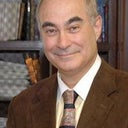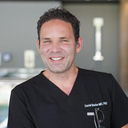How long will each of these last?
Answers (18)
From board-certified doctors and trusted medical professionals
Dr. Jeffrey M. Darrow, MD

Dr. Jeffrey M. Darrow, MD
Board Certified Plastic Surgeon
Answer
Dr. Lawrence Kass, MD

Dr. Lawrence Kass, MD
Oculoplastic Surgeon, Board Certified in Ophthalmology
Answer
Dr. Gregory S. Keller, MD, FACS

Dr. Gregory S. Keller, MD, FACS
Board Certified Facial Plastic Surgeon
Answer
Dr. Ross A. Clevens, MD, FACS

Dr. Ross A. Clevens, MD, FACS
Board Certified Facial Plastic Surgeon
Answer
Dr. Houtan Chaboki, MD

Dr. Houtan Chaboki, MD
Board Certified Facial Plastic Surgeon
Answer
Dr. David Shafer, MD, FACS

Dr. David Shafer, MD, FACS
Board Certified Plastic Surgeon
Answer
Dr. Steven J. Pearlman, MD, FACS

Dr. Steven J. Pearlman, MD, FACS
Board Certified Facial Plastic Surgeon
Answer
Dr. Robert L. Kraft, MD, FACS

Dr. Robert L. Kraft, MD, FACS
Board Certified Plastic Surgeon
Answer
Dr. Douglas M. Stevens, MD
Dr. Douglas M. Stevens, MD
Board Certified Facial Plastic Surgeon
Answer
More Brow Lift Questions
See all Brow Lift Q&AWE SEND PRETTY
EMAILS
What’s trending? Who’s turning heads? Which TikTok myths need busting? We’ve got you. No fluff, no gatekeeping—just real talk. Get our free, unfiltered newsletter.